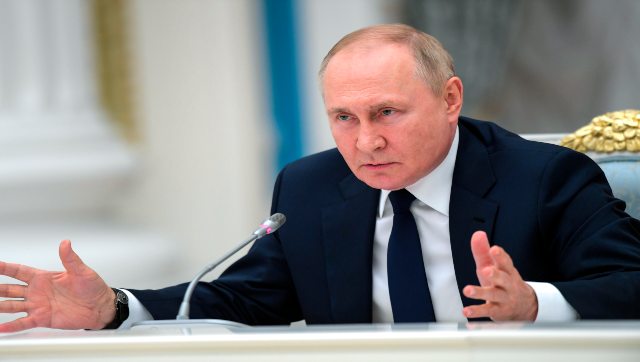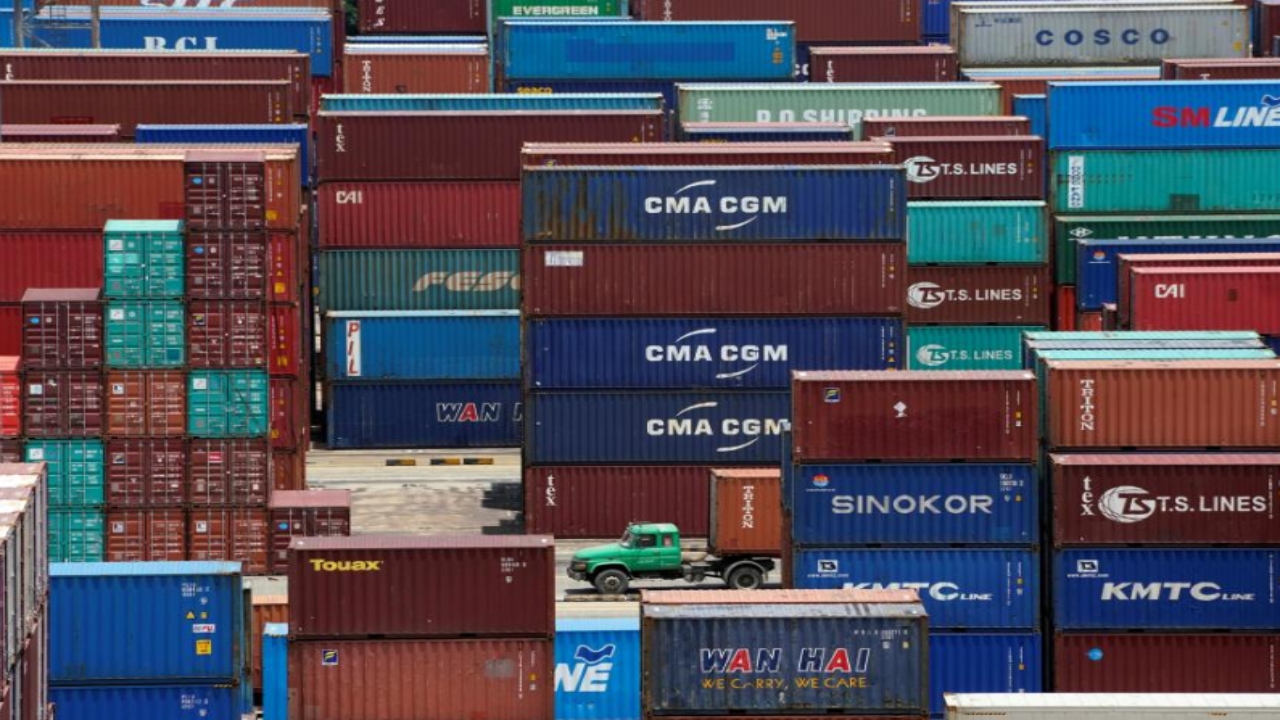An India-bound Russian cargo sent by train using the ambitious International North-South Transport Corridor (INSTC) for the first time reached Iran after travelling around 3,800 km through Kazakhstan and Turkmenistan. The train, carrying 39 freight containers, entered Iran on Tuesday through the Sarkhas Railway Station on the border with Turkmenistan, Iranian media reported. From the Sarkhas railway station, the cargo will be taken to Bandar Abbas port in southern Iran using a 1,600-km rail route from where it will be shipped to India by sea, the report said. The Iranian authorities organised a ceremony to welcome the train and it was attended by First Vice-President Mohammad Mokhber along with transport, oil, industry, and agriculture ministers, according to Tehran Times. In his address at the ceremony, Mokhber stressed the Iranian government’s determination for expanding trade with neighbouring countries, especially in the transit sector, it said. But what is the INSTC? And why is it important? Let’s take a closer look: The International North-South Transport Corridor (INSTC) is a 7,200-km-long multi-mode transport project for moving freight among India, Iran, Afghanistan, Armenia, Azerbaijan, Russia, Central Asia and Europe. The project, which has the backing of India and Russia, connects India Ocean and Persian Gulf to the Caspian Sea via Iran, Islamic Rep., and is then connected to Saint Petersburg and North European via Russia. The foundation of the North-South transport corridor was laid on 12 September, 2000, in accordance with an intergovernmental agreement signed between Russia, Iran, and India. Azerbaijan joined this agreement in 2005. This agreement was ratified by 13 countries (Azerbaijan, Belarus, Bulgaria, Armenia, India, Iran, Kazakhstan, Kyrgyzstan, Oman, Russia, Tajikistan, Turkey, Ukraine). The project has a number of components –– Northern and Western Europe –– the Russian Federation, Caucasus –– Persian Gulf (Western route); Central Asia –– Persian Gulf (Eastern Route); Caspian Sea –– Iran Persian Gulf (Central Route). What is its purpose? As per Business Standard, the main purpose of the corridor is to reduce carriage costs and transit time between India and Russia. Multimodal routes by sea, rail, and road under the INSTC look to reduce the carriage cost between India and Russia by about 30 per cent and bring down the transit time from 40 days by more than half, as per Economic Times. Why is it important to India? The shipment of the cargo using the INSTC comes amid the conflict in Ukraine. INSTC is considered a viable option for Indo-Russian trade amid current geo-political challenges and in the long run, could be an alternative to the Suez Canal, sources told the Economic Times. As per Business Standard, INSTC may help India meet its energy requirements. The improved connectivity along with RBI’s latest rupee settlement announcement may help the country import oil from Iran. Once a leading importer of Iranian oil, India stopped buying the commodity after the USA imposed sanctions on Iran in 2018.
India may also provide humanitarian aid to crisis-stricken Afghanistan through INSTC, as per the report.
As per The Diplomat, India is also promoting INSTC as a viable and fairer alternative to China’s Belt and Road Initiative (BRI). New Delhi’s grand geopolitical strategy is motivated in part by the dual goals of challenging and delegitimising China’s BRI in resource-rich regions of the world, including Central Asia and Africa. India says the Chinese project violates sovereignty as it passes through Pakistan-occupied Kashmir and that the project has been pushing countries towards mega debt. As per The Diplomat, China could be beginning to take note of India’s efforts regarding the INSTC – offering a late-April trip by Chinese State Councillor and Minister of National Defense Wei Fenghe to Kazakhstan, Turkmenistan, Iran, and Oman. “Although his trip went largely unnoticed by the international media and news outlets, the significance of it cannot be overstated,” a piece in The Diplomat noted. “China is unlikely to be able to prevent India from executing its INSTC and expanding its presence in the countries that lie alongside the corridor. That said, if Beijing can position itself as a major, if not the main, defence and security partner for Oman, Iran, Turkmenistan, and Kazakhstan, it could control the extent of New Delhi’s influence and regional reach,” the piece added. Why do Iran and Russia support it? Iran and Russia are also looking at using the Caspian Sea to cut the transit route from Russia to India. [caption id=“attachment_10884311” align=“alignnone” width=“640”]  Russian president Vladimir Putin gestures as he speaks to members of the State Duma and the Federal Assembly of The Russian Federation in the Kremlin in Moscow, Russia, on Thursday. AP[/caption] Russian president Vladimir Putin is scheduled to visit Iran next week and further boosting connectivity in the region could figure in the talks. Putin had in July, pushing it is the key connectivity link between Russia and India via Iran, described it as a truly ambitious project and called it a ““transport artery from St Petersburg to ports in Iran and India.” Russian deputy industry and trade minister Choriyev Ergashevich had called the INSTC a “very important corridor for the development of freight traffic in the region”, and suggested that member countries could also work on the joint design and construction of container ships and railway lines together. India pushes Chabahar port under INSTC India, which has also been pushing for boosting regional connectivity, is already working with Iran to develop the Chabahar port. India has proposed including the port – located in the Sistan-Balochistan province on the energy-rich Iran’s southern coast, and increasingly seen as a fulcrum of connectivity to Central Asia – within the framework of the INSTC. The Chabahar port in the Sistan-Balochistan province in the energy-rich nation’s southern coast is easily accessible from India’s western coast and is increasingly seen as a counter to Pakistan’s Gwadar Port located at a distance of around 80 km from Chabahar. New Delhi’s push to include Chabahar in the INSTC could also have been made with an eye on the Biden administration’s push for restoring talks with Iran on the JCPOA nuclear agreement, and the possible easing of some sanctions. [caption id=“attachment_10747901” align=“alignnone” width=“640”]  External Affairs Minister S Jaishankar. ANI[/caption] At a connectivity conference in Tashkent last year, External Affairs Minister S Jaishankar, speaking at a joint press meet with Armenian Foreign Minister Mirzoyan, projected the Chabahar Port as a key regional transit hub including to Afghanistan. “Both India and Armenia are members of the International North-South Transport Corridor (INSTC), which has the potential to bridge the connectivity barrier. So Minister Mirzoyan and I discussed the interest which Armenia has shown in utilisation of the Chabahar Port in Iran and being developed by India,” Jaishankar said in his remarks. “We also proposed the Chabahar Port be included in the International North-South Transport Corridor; we welcome the use of the Chabahar Port and any other initiative that will encourage regional connectivity," he said. Asked about the possibility of including Chabahar in the corridor, an Iranian official said Iran would “welcome it”, but that procedurally, it is the INSTC governing council that would have to review the proposal and clear it. With inputs from agencies Read all the Latest News , Trending News , Cricket News , Bollywood News , India News and Entertainment News here. Follow us on Facebook, Twitter and Instagram.


)

)
)
)
)
)
)
)
)



